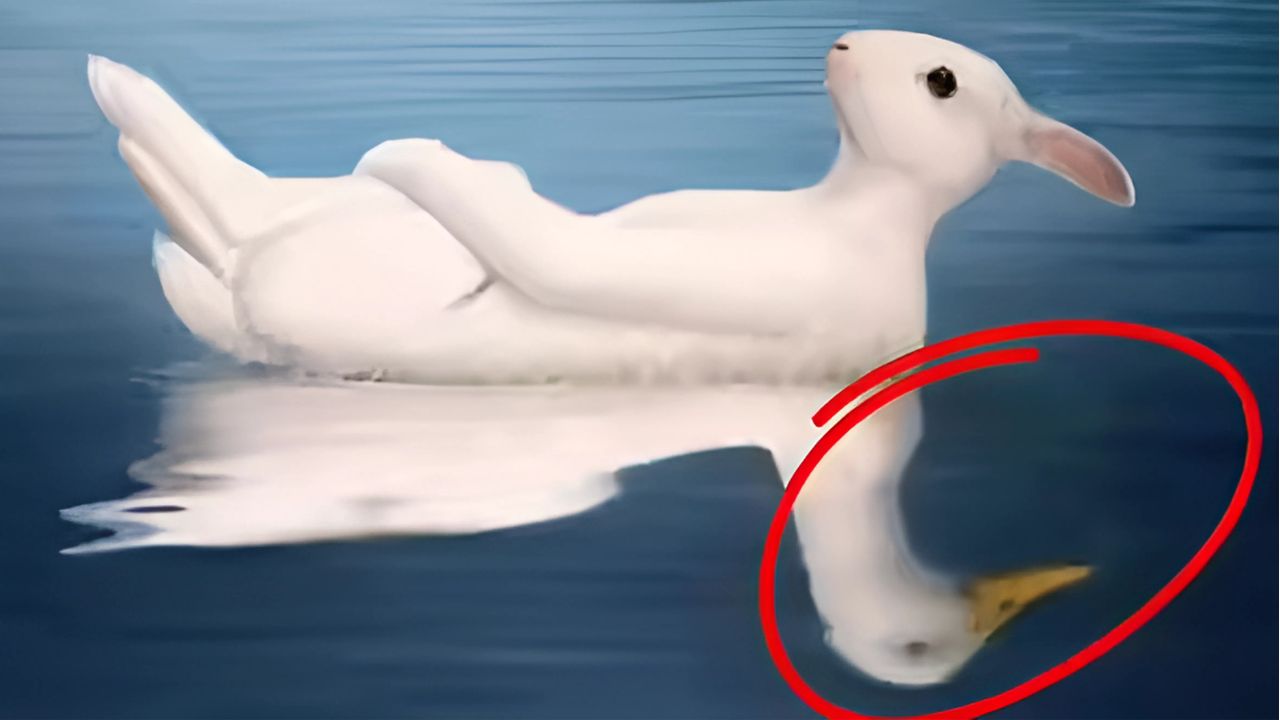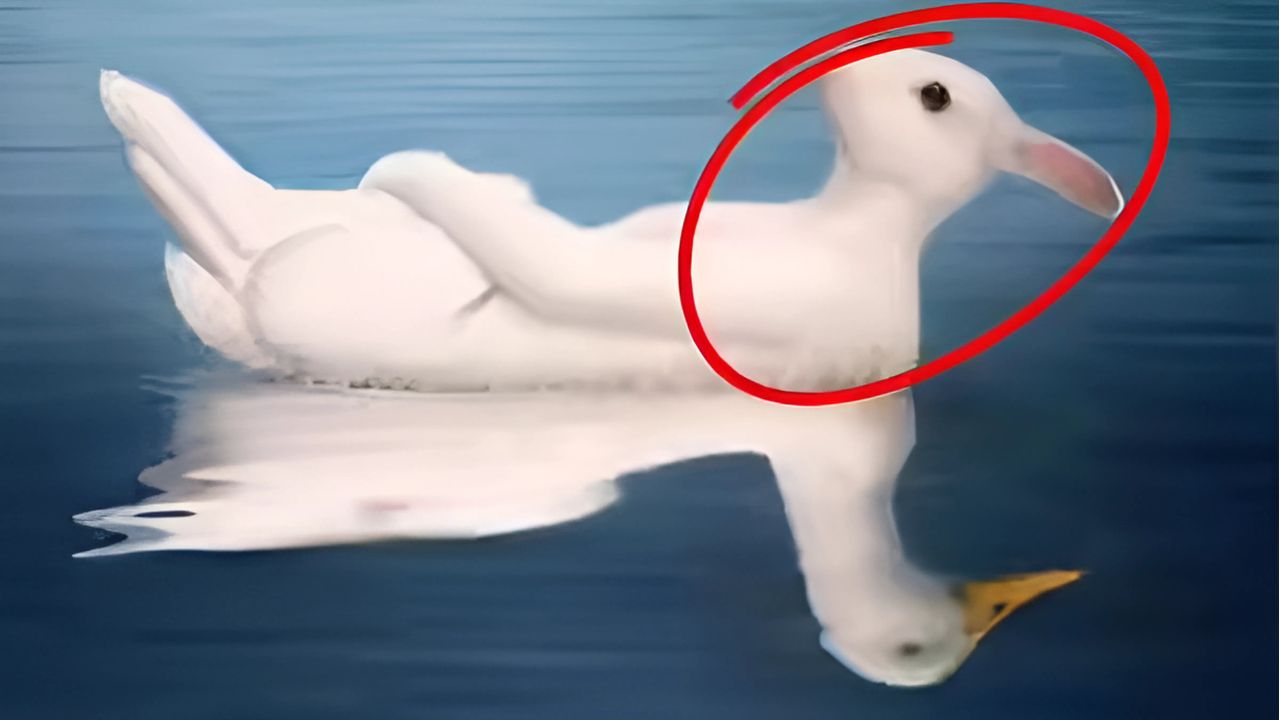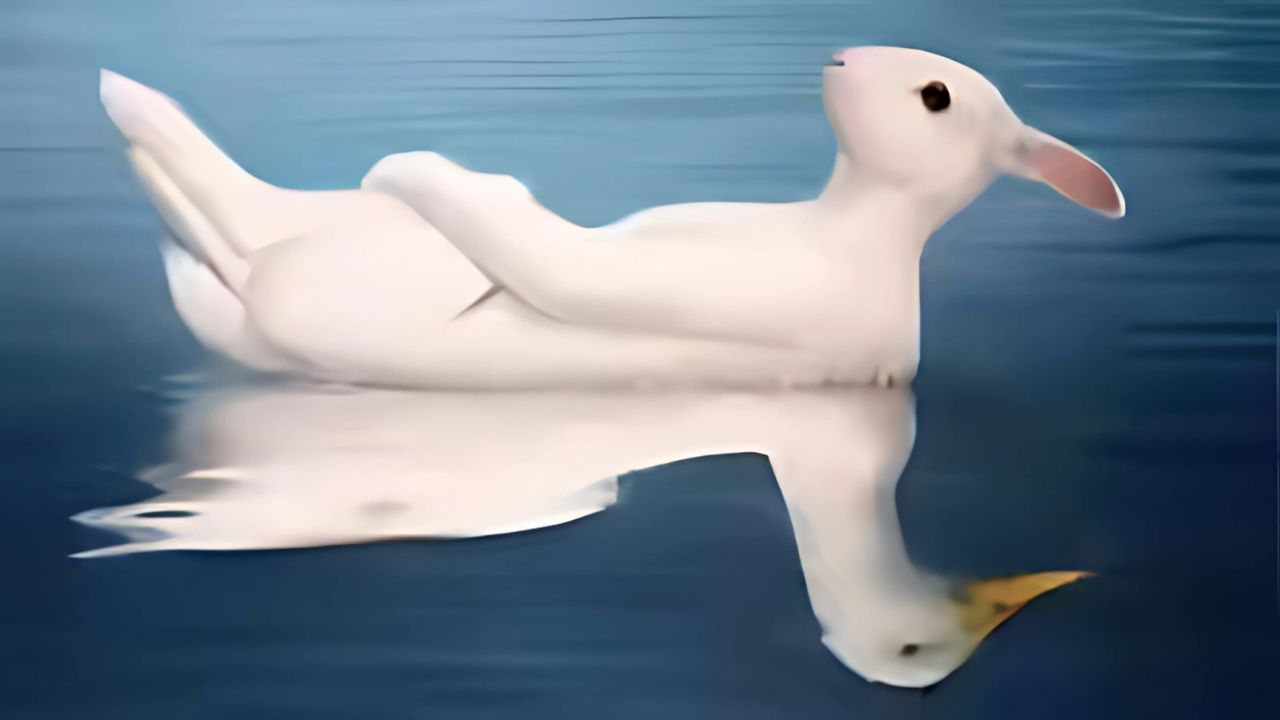Have you ever stared at an image and wondered why your friend sees something completely different from what you observe? The famous duck-rabbit optical illusion has captivated minds for over a century, serving as both an entertaining visual puzzle and a fascinating window into human psychology. This seemingly simple drawing reveals profound insights about how our brains process information and what these patterns might suggest about our personality traits.
The History Behind the Famous Illusion
The duck-rabbit image isn’t a modern internet creation. This remarkable optical illusion first appeared in a German humor magazine called “Fliegende Blätter” in 1892, where it was simply titled “Which animals are most like each other?” The illustration gained scientific recognition when American psychologist Joseph Jastrow featured it in his research on perception and consciousness in 1899.
Jastrow was particularly interested in how people could see the same image yet perceive entirely different objects. He noted that most individuals would see either a duck facing left or a rabbit facing right, but rarely both simultaneously. This observation laid the groundwork for decades of research into visual perception, cognitive flexibility, and personality psychology.
The illusion gained renewed fame when philosopher Ludwig Wittgenstein used it in his influential work “Philosophical Investigations” to explore concepts of perception and meaning. Since then, it has become one of the most studied and referenced optical illusions in psychology textbooks worldwide.
How the Duck-Rabbit Illusion Works
At its core, the duck-rabbit illusion demonstrates a phenomenon called “perceptual ambiguity.” The same visual information can be interpreted by our brains in multiple ways, leading to distinctly different perceptions. The image contains enough visual cues to support both interpretations: the duck’s bill becomes the rabbit’s ears, and what appears as the back of the duck’s head transforms into the rabbit’s mouth.
Our visual system constantly makes rapid decisions about what we’re seeing, often before we’re consciously aware of the process. When faced with ambiguous information, our brains rely on various factors to make sense of the image, including our past experiences, current mental state, cultural background, and individual cognitive preferences.
Neuroscientists have discovered that different areas of the brain activate when people perceive the duck versus the rabbit. This suggests that the illusion taps into fundamental differences in how individuals process visual information and make perceptual decisions.
What Seeing the Duck First Reveals About Your Personality

If you immediately spotted a duck when looking at the illusion, research suggests you may possess certain personality characteristics that distinguish you from those who see the rabbit first. Understanding these traits can provide valuable insights into your cognitive style and behavioral tendencies.
Charm and Social Intelligence
Duck-first viewers often display exceptional social skills and natural charm. They tend to be the people others gravitate toward at parties, workplace gatherings, and social events. This charm isn’t superficial; it stems from a genuine ability to read social cues, understand emotional undertones, and respond appropriately to different personality types.
These individuals typically excel at making others feel comfortable and valued. They possess an intuitive understanding of what to say and when to say it, making them natural diplomats and mediators in conflicts. Their social intelligence allows them to navigate complex interpersonal dynamics with ease.
Emotional Intuition
Duck-first viewers often demonstrate heightened emotional intelligence. They can quickly assess the mood of a room, pick up on subtle changes in people’s emotions, and respond with appropriate empathy or support. This emotional intuition makes them excellent friends, partners, and colleagues who others turn to during difficult times.
Their ability to connect with others on an emotional level often translates into success in fields requiring interpersonal skills, such as counseling, sales, teaching, or management roles where understanding and motivating people is crucial.
Adaptability and Flexibility
People who see the duck first tend to be highly adaptable individuals who thrive in changing environments. They’re comfortable with uncertainty and can quickly adjust their approach when circumstances shift. This flexibility extends beyond just social situations to problem-solving and decision-making processes.
Duck-first viewers often prefer collaborative approaches to challenges and are willing to consider multiple perspectives before reaching conclusions. They value harmony and are skilled at finding common ground among conflicting viewpoints.
Creative Communication
These individuals often possess strong communication skills and creative expression abilities. They can articulate ideas in ways that resonate with diverse audiences and are skilled at storytelling, whether in professional presentations or casual conversations.
Their natural charisma often makes them effective leaders who can inspire and motivate others through vision and persuasion rather than authority or force.
What Seeing the Rabbit First Reveals About Your Personality

If the rabbit caught your attention immediately, you likely possess a distinct set of personality traits that reflect a different cognitive approach to processing information and interacting with the world around you.
Analytical Thinking and Intellectual Curiosity
Rabbit-first viewers typically exhibit strong analytical capabilities and intellectual curiosity. They approach problems systematically, breaking down complex issues into manageable components. These individuals often excel in fields requiring logical reasoning, critical thinking, and detailed analysis.
Their intellectual nature drives them to seek understanding beyond surface-level explanations. They enjoy exploring ideas in depth, questioning assumptions, and developing comprehensive knowledge about subjects that interest them.
Attention to Detail
People who see the rabbit first often possess exceptional attention to detail. They notice things others might miss and are thorough in their approach to tasks and projects. This meticulousness makes them valuable team members in roles requiring precision and accuracy.
Their detail-oriented nature extends to their personal lives as well. They often maintain organized living spaces, keep detailed schedules, and approach personal goals with structured planning and execution.
Independent Thinking
Rabbit-first viewers tend to be independent thinkers who value autonomy and self-reliance. They prefer to form their own opinions based on careful analysis rather than accepting popular views without question. This independence can make them effective researchers, analysts, and innovators.
They often feel comfortable working alone and may prefer quiet environments where they can focus deeply on complex problems without interruption.
Strategic Planning
These individuals typically excel at long-term strategic thinking. They can envision future scenarios, identify potential obstacles, and develop comprehensive plans to achieve their objectives. This strategic mindset makes them valuable in leadership roles where planning and foresight are essential.
Their intellectual approach to problem-solving often leads them to consider multiple variables and potential outcomes before making decisions, resulting in well-thought-out choices that consider long-term consequences.
Technical and Scientific Aptitude
Rabbit-first viewers often demonstrate strong aptitude for technical and scientific subjects. They enjoy understanding how things work, exploring cause-and-effect relationships, and applying logical principles to solve complex problems.
This technical inclination may lead them toward careers in engineering, research, data analysis, or other fields where systematic thinking and technical expertise are valued.
The Science Behind Personality and Perception
Recent neuroscience research has revealed fascinating connections between personality traits and visual perception patterns. Brain imaging studies show that people with different personality types actually process visual information differently at the neurological level.
Cognitive Flexibility and Brain Function
Studies using functional magnetic resonance imaging (fMRI) have demonstrated that individuals who can quickly switch between seeing the duck and rabbit show increased activity in brain regions associated with cognitive flexibility. These areas include the prefrontal cortex and anterior cingulate cortex, which are crucial for adapting thinking patterns and switching between different concepts.
People with higher cognitive flexibility scores on standardized psychological assessments tend to be more open to new experiences, more creative, and better at adapting to changing circumstances. These traits align closely with the personality characteristics observed in people who can easily switch between perceiving the duck and rabbit.
Processing Styles and Personality Dimensions
Research has also explored connections between the duck-rabbit illusion and the “Big Five” personality dimensions. Studies suggest that people who initially see the duck may score higher on extraversion and agreeableness measures, while those who see the rabbit first might score higher on conscientiousness and openness to experience.
These correlations make sense when considering the behavioral tendencies associated with each personality dimension. Extraverted individuals naturally focus on social and interpersonal cues (like the duck’s expressive features), while conscientious people may be drawn to the rabbit’s more structured, geometric appearance.
Cultural and Environmental Influences
Interestingly, research has shown that cultural background can influence which animal people see first. In cultures where rabbits are more common or culturally significant, people are more likely to see the rabbit initially. Similarly, in regions where ducks are more prevalent, duck-first perception is more common.
This cultural influence demonstrates how our experiences and environment shape our perception patterns, adding another layer to the personality interpretation of the illusion.
Practical Applications in Daily Life
Understanding your perceptual tendencies can provide valuable insights for personal and professional development. Whether you’re a duck-first or rabbit-first viewer, recognizing your natural strengths can help you make more informed decisions about career paths, relationships, and personal growth strategies.
Career Implications
Duck-first viewers might thrive in careers that emphasize interpersonal skills and relationship building. Consider fields such as:
- Sales and marketing
- Human resources
- Counseling and therapy
- Teaching and training
- Public relations
- Event planning
- Customer service management
Rabbit-first viewers may find fulfillment in careers that reward analytical thinking and technical expertise:
- Engineering and technology
- Research and development
- Data analysis and statistics
- Financial planning and accounting
- Scientific research
- Quality assurance
- Strategic consulting
Relationship Dynamics
Understanding these perceptual differences can improve personal relationships. Duck-first viewers might need to be patient with partners who require more time to process emotions, while rabbit-first viewers might benefit from expressing appreciation for their partner’s emotional insights and social skills.
Recognizing these different approaches to processing information can reduce misunderstandings and help couples appreciate their complementary strengths.
Team Building and Workplace Collaboration
In professional settings, teams benefit from having both duck-first and rabbit-first viewers. Duck-first individuals can facilitate communication, build consensus, and maintain team morale, while rabbit-first viewers can ensure attention to detail, strategic planning, and thorough analysis of decisions.
Understanding these different cognitive styles can help managers assign tasks more effectively and create balanced teams that leverage diverse strengths.
Limitations and Considerations
While the duck-rabbit personality test offers interesting insights, it’s important to approach the results with appropriate perspective. Personality is complex and multifaceted, influenced by numerous factors including genetics, environment, experiences, and cultural background.
Not a Definitive Assessment
The duck-rabbit illusion should be viewed as one interesting data point about your cognitive style rather than a comprehensive personality assessment. Professional personality tests like the Myers-Briggs Type Indicator or Big Five assessment provide more comprehensive and validated measures of personality traits.
Individual Variation
Some people can see both animals equally easily, while others may struggle to see either interpretation clearly. These variations don’t necessarily indicate personality deficits; they simply reflect the diverse ways human brains process visual information.
Context Dependency
Your initial perception might be influenced by factors unrelated to personality, such as your current mood, recent experiences, or even the time of day. For more reliable insights, consider how you typically approach problems and interact with others across various situations.
Enhancing Your Cognitive Flexibility
Regardless of whether you initially see the duck or rabbit, you can develop greater cognitive flexibility through practice and mindful attention to different perspectives.
Perspective-Taking Exercises
Practice looking at situations from multiple viewpoints. When facing a challenge, deliberately consider how someone with different personality traits might approach the same problem. This exercise can expand your problem-solving repertoire and improve your ability to work with diverse team members.
Mindfulness and Awareness
Develop awareness of your automatic thought patterns and perceptual tendencies. Notice when you gravitate toward familiar approaches and consciously explore alternative methods. This mindfulness can help you become more adaptable and effective in various situations.
Cross-Training Your Skills
Duck-first viewers can benefit from developing analytical skills through activities like logic puzzles, strategic games, or technical learning. Rabbit-first viewers might enhance their social skills through activities that require interpersonal interaction and emotional awareness.
The Broader Implications for Understanding Human Nature
The duck-rabbit illusion represents something profound about human nature: our individual differences in perception reflect deeper variations in how we process information, make decisions, and interact with the world. These differences aren’t right or wrong; they’re complementary aspects of human cognitive diversity.
Celebrating Cognitive Diversity
Rather than viewing perceptual differences as divisions, we can appreciate them as valuable variations that strengthen groups and organizations. Teams with diverse cognitive styles often outperform homogeneous groups because they can approach challenges from multiple angles and catch potential blind spots.
Building Empathy and Understanding
Understanding how others might perceive the same situation differently can increase empathy and reduce conflicts. When we recognize that someone’s different response isn’t obstinate or wrong but reflects their cognitive style, we can communicate more effectively and build stronger relationships.
Embracing Your Unique Perspective
The duck-rabbit optical illusion offers a fascinating glimpse into the relationship between perception and personality. Whether you see the charming duck or the intellectual rabbit first, your initial perception reflects valuable aspects of your cognitive style and behavioral tendencies.
Duck-first viewers bring essential social intelligence, emotional awareness, and adaptability to their relationships and work environments. Their natural charm and interpersonal skills help build connections and create positive experiences for others.
Rabbit-first viewers contribute crucial analytical thinking, attention to detail, and strategic planning capabilities. Their intellectual curiosity and systematic approach help solve complex problems and ensure thorough consideration of important decisions.
The most successful individuals and teams learn to appreciate and leverage both perspectives. By understanding your natural tendencies while developing complementary skills, you can become more effective in both personal and professional contexts.
Remember that personality is complex and multifaceted. While the duck-rabbit test provides interesting insights, it’s just one piece of the larger puzzle of who you are. Use these insights as a starting point for self-reflection and growth, but don’t limit yourself to any single interpretation of your capabilities or potential.
Whether you see ducks, rabbits, or both, embrace your unique perspective while remaining open to the valuable insights that different viewpoints can provide. In a world that benefits from cognitive diversity, your particular way of seeing and processing information is both valuable and necessary.
The next time you encounter the duck-rabbit illusion, take a moment to appreciate not just what you see, but what your perception reveals about the remarkable complexity and diversity of human consciousness. After all, in a world where we all face the same image but see different realities, understanding and celebrating these differences might be the key to better collaboration, communication, and connection with others.
